The 1917 Walking Liberty Half Dollar value ranges from $18 to over $40,000 depending on mint mark location and condition. Philadelphia coins (no mint mark) start at $18, while Denver (D) and San Francisco (S) versions exist with mint marks on either obverse or reverse sides. The rarest 1917-D obverse mint mark can reach $40,000 in MS-65+ grade. Obverse mint mark varieties are significantly more valuable than reverse versions. Notable errors include repunched mint marks, doubled dies, and delamination. Circulated coins range from $18-$900, while uncirculated examples span $70-$15,000. Condition greatly impacts value, with Mint State specimens commanding premium prices.
The 1917 Walking Liberty Half Dollar stands as one of the most intriguing United States coins for collectors and investors alike. What makes this particular year exceptional isn’t just its iconic design by Adolph A. Weinman, but the dramatic shift in mint mark placement that occurred mid-year at both the Denver and San Francisco facilities. This transition created six distinct varieties from a single year, with values ranging from under $20 to over $40,000 depending on mint mark location and condition.
Understanding the 1917 Mint Mark Transition
In 1917, the United States Mint made a significant change to the Walking Liberty Half Dollar design. Early in the year, coins struck at Denver and San Francisco featured their respective mint marks on the obverse (front) side of the coin, positioned below the motto “IN GOD WE TRUST.” Midway through production, the Mint relocated these identifiers to the reverse (back) side, near the rim at roughly the 7 o’clock position, just below the branch that the eagle perches upon.
This seemingly minor adjustment created a fascinating collecting category. Philadelphia Mint coins never carried a mint mark during this era, resulting in just one variety from that facility. However, Denver and San Francisco each produced two distinct types, giving collectors five main varieties to pursue from 1917 alone.
The transition wasn’t arbitrary. Mint officials believed the reverse placement would be less intrusive to Weinman’s artistic vision on the obverse, which depicts Lady Liberty striding confidently toward the sunrise, draped in the American flag with her right arm extended and holding laurel and oak branches in her left.
Philadelphia Mint: No Mint Mark Values
The Philadelphia Mint struck 12,292,000 half dollars in 1917 without any mint mark. These represent the most common variety and serve as the baseline for comparison with the scarcer Denver and San Francisco issues.
Value by Grade:
| Grade | Value |
|---|---|
| Good (G-4) | $18 |
| Fine (F-12) | $19.50 |
| Very Fine (VF-20) | $24 |
| Extremely Fine (EF-40) | $42 |
| About Uncirculated (AU-50) | $58 |
| Mint State (MS-60) | $70 |
| Mint State (MS-63) | $165 |
| Mint State (MS-65) | $850 |
The Philadelphia issues in circulated grades remain affordable for beginning collectors. A well-worn example showing Liberty’s full outline but limited detail costs less than a meal at a mid-range restaurant. Even attractive extremely fine specimens showing minimal wear on Liberty’s left arm and leg trade for under $50.
Uncirculated examples become substantially more valuable. The jump from circulated to mint state reflects the relative scarcity of coins that escaped into commerce without being spent. Most 1917 half dollars entered circulation immediately and accumulated wear through normal use over decades.
Denver Mint Obverse: The Premium Variety
The 1917-D with obverse mint mark is the most valuable variety in the series. The Denver Mint struck only 765,400 pieces with this placement before switching to the reverse location, making it the lowest mintage of all 1917 half dollars.
Locating the mint mark requires examining the obverse carefully. Look directly below the motto “IN GOD WE TRUST,” which appears beneath Liberty’s left arm. The small “D” sits in the field between the motto and Liberty’s gown.
Value by Grade:
| Grade | Value |
|---|---|
| Good (G-4) | $30 |
| Fine (F-12) | $85 |
| Very Fine (VF-20) | $195 |
| Extremely Fine (EF-40) | $475 |
| About Uncirculated (AU-50) | $900 |
| Mint State (MS-60) | $1,500 |
| Mint State (MS-63) | $4,200 |
| Mint State (MS-65) | $15,000 |
The premium for this variety becomes apparent even in heavily worn condition. While a Philadelphia coin in good condition costs $18, the Denver obverse mint mark commands $30 for the same grade—a 67% premium for a coin that’s seen decades of circulation.
The gap widens dramatically in higher grades. A PCGS-certified MS-65+ example achieved $40,250 at auction in a Heritage sale, demonstrating the extreme rarity of gem-quality survivors. Professional Coin Grading Service (PCGS) has certified fewer than 50 examples in MS-65 or better condition, explaining the five-figure valuations.
Denver Mint Reverse: The Mid-Range Option
After relocating the mint mark to the reverse, Denver struck 1,940,000 half dollars in 1917. This higher mintage makes the variety more accessible than its obverse counterpart, though it still carries significant premiums over Philadelphia issues.
The “D” appears on the reverse below the eagle, near the rim between the branch and the denomination “HALF DOLLAR.” You’ll find it at approximately the 7 o’clock position when viewing the coin as a clock face.
Value by Grade:
| Grade | Value |
|---|---|
| Good (G-4) | $25 |
| Fine (F-12) | $45 |
| Very Fine (VF-20) | $78 |
| Extremely Fine (EF-40) | $165 |
| About Uncirculated (AU-50) | $245 |
| Mint State (MS-60) | $325 |
| Mint State (MS-63) | $875 |
| Mint State (MS-64) | $2,100 |
| Mint State (MS-65) | $9,500 |
An NGC-certified MS-64 example sold on eBay for $2,187 in 2023, reflecting strong collector demand for choice uncirculated examples. The substantial jump to MS-65 grade—from roughly $2,100 to $9,500—illustrates how condition sensitivity intensifies at higher grade levels.
For collectors on moderate budgets, attractive circulated examples in very fine condition offer a sweet spot. At around $78, these coins show Liberty’s full detail with moderate wear on the high points, providing excellent eye appeal without the four-figure cost of mint state pieces.
San Francisco Mint Obverse: The Condition Rarity
San Francisco struck 952,000 half dollars with the obverse mint mark location in 1917, making it slightly less rare by mintage than the Denver obverse but comparable in market value. The “S” mint mark appears in the same location as the Denver version—below “IN GOD WE TRUST” on the obverse.
Value by Grade:
| Grade | Value |
|---|---|
| Good (G-4) | $35 |
| Fine (F-12) | $95 |
| Very Fine (VF-20) | $210 |
| Extremely Fine (EF-40) | $450 |
| About Uncirculated (AU-50) | $825 |
| Mint State (MS-60) | $1,650 |
| Mint State (MS-63) | $4,500 |
| Mint State (MS-65) | $16,000 |
APMEX sold an EF-40 example for $237 in 2024, slightly above typical retail levels, suggesting active buyer competition for this variety. The San Francisco obverse mint mark variety appears to be particularly challenging to locate in gem mint state condition, with MS-65 specimens commanding $16,000 or more.
Interestingly, this variety often shows weaker strikes than Philadelphia or Denver issues, particularly on Liberty’s left hand and the eagle’s breast feathers on the reverse. Collectors should examine multiple examples when possible, as strike quality significantly impacts eye appeal even within the same numerical grade.
San Francisco Mint Reverse: The Affordable Alternative
The San Francisco Mint struck 5,554,000 half dollars with the reverse mint mark placement, making it the second most common variety after Philadelphia. The “S” appears in the same reverse location as the Denver reverse mint mark.
Value by Grade:
| Grade | Value |
|---|---|
| Good (G-4) | $27 |
| Fine (F-12) | $48 |
| Very Fine (VF-20) | $85 |
| Extremely Fine (EF-40) | $175 |
| About Uncirculated (AU-50) | $285 |
| Mint State (MS-60) | $1,300 |
| Mint State (MS-63) | $3,200 |
| Mint State (MS-65) | $10,000 |
Despite the relatively high mintage, this variety jumps substantially in value at the mint state level. The leap from AU-50 at $285 to MS-60 at $1,300 represents more than a quadrupling in price, reflecting the rarity of uncirculated survivors from this issue.
The San Francisco reverse variety offers collectors an interesting proposition: it’s affordable in circulated grades but becomes a significant investment in choice uncirculated condition. A very fine example around $85 provides an attractive specimen for type collectors or those assembling a circulated set, while serious collectors pursuing mint state examples face valuations comparable to the scarcer Denver reverse variety.
Error Varieties and Collectible Anomalies
Beyond the standard mint mark varieties, several error types and die varieties add collecting interest to 1917 half dollars.
Repunched Mint Marks: Some 1917-D and 1917-S coins show evidence of the mint mark being punched multiple times in slightly different positions. These “RPM” varieties (Repunched Mint Mark) appear as a doubling or shadow around the mint mark when viewed under magnification. A strong 1917-S/S RPM in mint state condition can command a 25-50% premium over a normal example of the same grade. ToughCOINS documented a dramatic 1917-D/D variety showing clear separation between the two punches, which sold for $425 in AU condition versus $245 for a standard coin.
Delamination Errors: Some 1917 half dollars were struck on defective planchets that separated into layers after striking. These dramatic errors show metal peeling away from the coin’s surface on one or both sides. A 1917 Philadelphia half dollar with bilateral delamination sold on ToughCOINS for $165, despite the coin being damaged in the traditional sense. Error collectors prize these pieces as dramatic examples of mint quality control failures.
Doubled Dies: Minor doubled die varieties exist for 1917 half dollars, primarily affecting the date and motto. These show as a slight doubling or shadow on affected design elements when examined under magnification. Most 1917 doubled dies are minor and command modest premiums of 10-30% above standard values in the same grade. PCGS and NGC attribute significant varieties with special designations like “1917 DDO” (Doubled Die Obverse).
Strike Doubling vs. Hub Doubling: It’s important to distinguish true doubled dies from machine doubling (also called strike doubling or shelf doubling). Machine doubling shows as flat, shelf-like doubling without depth separation, while true doubled dies show full depth on both images. True doubled dies are collectible varieties; machine doubling adds no value.
Grading Considerations for 1917 Half Dollars
Walking Liberty Half Dollars present specific grading challenges that directly impact value. Understanding these points helps collectors make informed purchasing decisions.
The obverse high points that show wear first include Liberty’s left arm, her left breast, her left leg from knee to ankle, and the lines in her gown. On the reverse, check the eagle’s breast feathers and the high points of its left leg.
For coins grading About Uncirculated (AU-50 to AU-58), expect minimal wear on these high points with most luster intact in protected areas. The dividing line between AU and Mint State often comes down to the presence or absence of friction on Liberty’s left breast and arm.
In Mint State grades (MS-60 to MS-70), the focus shifts to contact marks, luster quality, and strike characteristics. MS-60 to MS-62 coins show numerous contact marks and may have dull or impaired luster. MS-63 represents “choice” quality with fewer marks and good luster. MS-64 adds better luster and fewer marks. MS-65 “gem” pieces show minimal marks, strong luster, and good overall eye appeal.
Strike quality varies significantly among 1917 half dollars, particularly for San Francisco issues. A weakly struck MS-64 with flat details on Liberty’s hand may have less eye appeal than a sharply struck MS-63, even though the numerical grade is lower. Experienced collectors often prioritize strike over strict grade numbers.
Building Your 1917 Half Dollar Collection Strategy
For collectors pursuing 1917 Walking Liberty Half Dollars, several strategic approaches make sense depending on budget and goals.
The Type Collector Approach: If you simply want one attractive example of a 1917 Walking Liberty Half Dollar for a type set, focus on Philadelphia or San Francisco reverse mint mark coins in Very Fine to Extremely Fine condition. For $24 to $42, you’ll acquire an attractive coin with all major design elements visible and moderate wear that doesn’t detract from overall appearance.
The Date-and-Mint Collector Approach: Assembling one example of each variety requires collecting all six types. For budget-conscious collectors, pursuing circulated examples in Fine to Very Fine grades makes the expensive Denver and San Francisco obverse varieties more accessible. A complete set in F-12 grade would cost approximately $375, with the two obverse varieties accounting for about half that total.
The Condition Census Approach: Advanced collectors pursuing high-grade examples face a different market entirely. The two obverse mint mark varieties in MS-65 or better represent substantial five-figure investments and require patience to locate. Heritage Auctions, Stack’s Bowers, and other major numismatic auction houses offer the best opportunities for acquiring these rarities, though eBay occasionally features certified examples.
The Variety Specialist Approach: Focusing on repunched mint marks, doubled dies, and other die varieties offers an affordable way to specialize within the 1917 series. Most minor varieties cost only modest premiums over standard coins, making this approach accessible while providing collecting depth.
Regardless of strategy, third-party certification by PCGS or NGC provides essential authentication and grading verification for coins valued over $200. The certification fee of $30-50 represents a small percentage of value for expensive varieties while providing marketplace confidence when buying or selling.
Where These Coins Trade Hands Today
The market for 1917 Walking Liberty Half Dollars remains active across multiple venues. Major auction houses handle the finest certified examples, with Heritage Auctions alone offering dozens of 1917 half dollars annually. Their auction archives provide excellent research resources for tracking realized prices.
Online marketplaces like eBay feature hundreds of 1917 half dollars at any given time, ranging from circulated examples under $25 to certified gems approaching five figures. Buyer protection programs and the prevalence of certified coins make eBay a viable option, though prices sometimes run higher than dealer retail.
APMEX, JM Bullion, and other major online bullion dealers maintain rotating inventories of certified 1917 half dollars, typically at standardized premiums over their published price guides. These sources offer convenience and reliability, though selection may be limited compared to auction houses.
Local coin shops provide opportunities to examine coins in hand before purchasing, an advantage when assessing eye appeal and strike quality. Dealers often negotiate on price, particularly for multiple-coin purchases.
Coin shows bring together dozens or hundreds of dealers, creating a competitive marketplace that often yields better prices than retail sources. Major shows like the ANA World’s Fair of Money or regional shows feature specialists in Walking Liberty Half Dollars who maintain deep inventories of 1917 varieties.
Protecting Your Investment in These Historic Coins
Once you’ve acquired 1917 half dollars, proper storage preserves their condition and value. Never clean coins—even light cleaning can reduce value by 50% or more. Handle coins by their edges only, preferably while wearing cotton gloves.
For certified coins in PCGS or NGC holders, the sealed slabs provide excellent protection. Store them in specialized slab boxes that prevent scratching while allowing easy viewing.
Raw (uncertified) coins require more careful storage. Inert plastic flips provide basic protection for circulated coins. For uncirculated examples, archival-quality cardboard holders with inert Mylar windows offer better long-term preservation. Avoid PVC-containing plastics, which can damage coins over years of storage.
Insurance becomes important as collection value grows. Homeowner’s policies typically provide limited coverage for coin collections, often capped at $1,000-2,000 total. Specialized collectibles insurance through companies like Hugh Wood Inc. or American Collectors Insurance offers agreed-value coverage specifically designed for numismatic items, with premiums typically running 1-2% of insured value annually.
Investment Potential and Market Trends
The 1917 Walking Liberty Half Dollar market has shown steady appreciation over decades, with certain varieties outperforming others. The obverse mint mark varieties from Denver and San Francisco have appreciated particularly strongly, benefiting from low populations in high grades and strong collector demand.
According to the PCGS Price Guide, a 1917-D obverse mint mark in MS-65 valued at approximately $8,000 in 2010 commands $15,000 today—an 88% increase over fourteen years, or roughly 4.5% annual appreciation. This outpaces general inflation while providing tangible asset diversification.
However, the coin market experiences cycles like any other investment. The period from 2008-2011 saw dramatic price increases driven by precious metals speculation and economic uncertainty. A correction followed from 2013-2016, with prices declining 20-30% for many issues before stabilizing and resuming gradual appreciation.
Circulated examples in Good through Fine grades appreciate more slowly than mint state coins, as they’re more common and less condition-sensitive. These coins often trade close to their silver melt value (approximately $8-10 depending on silver prices) plus a modest numismatic premium, limiting downside risk but also capping appreciation potential.
The collecting base for Walking Liberty Half Dollars remains strong, supported by the series’ beautiful design, manageable scope (1916-1947), and iconic status in American numismatics. This broad collector demand provides market stability that more esoteric series lack.
Making Your First Purchase Work for You
If you’re ready to acquire a 1917 Walking Liberty Half Dollar, start by determining your budget and collecting goals. Research current market values using the PCGS Price Guide, NGC Price Guide, and recent auction results to understand fair pricing. When examining potential purchases, prioritize eye appeal—an attractive coin at grade often outperforms an unattractive example grading one point higher. For expensive varieties exceeding $500, insist on third-party certification from PCGS or NGC to ensure authenticity and accurate grading. Finally, develop relationships with reputable dealers who can source quality coins and provide expertise as your collection grows. These silver treasures from 1917 offer both historical significance and collecting satisfaction, whether you’re pursuing a single type example or assembling a complete variety set.
You may be interested:
- 1859 Indian Head Penny Coin Value Complete Errors List And No Mint Mark Worth Guide For Collectors
- 1911 V Nickel Coin Value Guide Complete Errors List And No Mint Mark Worth Today
- 1902 Dime Coin Value Complete Errors List With O S And No Mint Mark Worth Guide
- 1788 Quarter Coin Value Complete Guide Errors List And D S P Mint Mark Worth Revealed
- 1776 To 1976 Bicentennial Half Dollar Coin Value Complete Errors List And What Your D S And No Mint Mark Coins Are Actually Worth
- 1990 Penny Coin Value Errors List How D S And No Mint Mark Pennies Are Worth Thousands Of Dollars

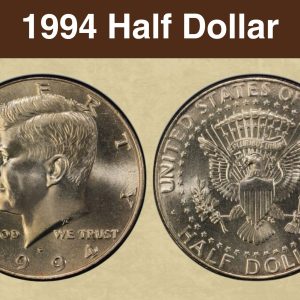
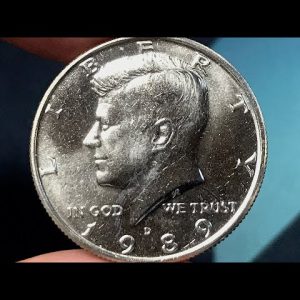
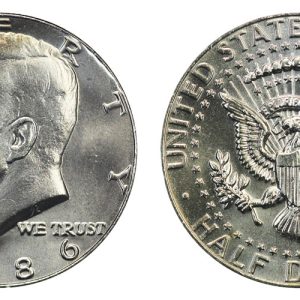
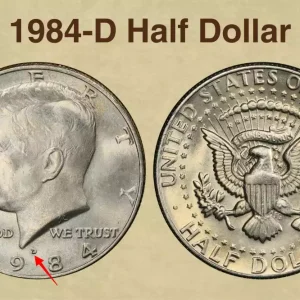
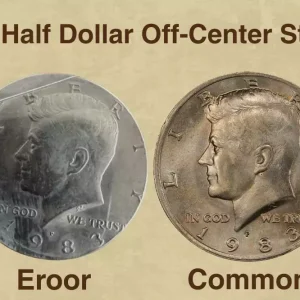
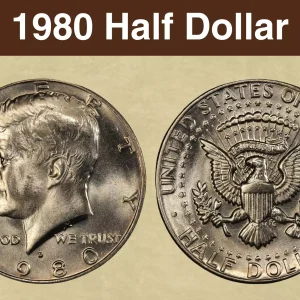
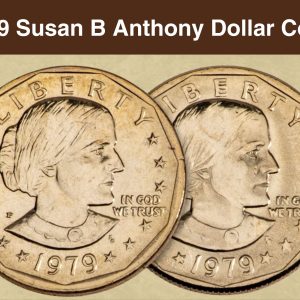
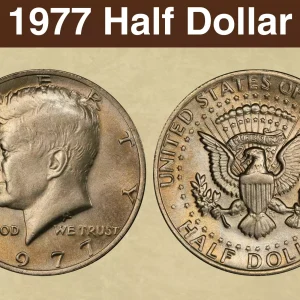
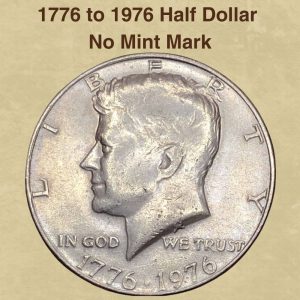
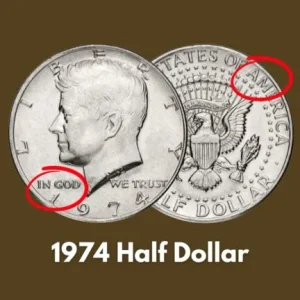
What is the rarest year of The Walking Liberty half dollar?
1921-S Walking Liberty Half Dollar Although the 1919-D is rarest in Gem condition, the 1919-S actually had fewer coins issued. Only 548,000 of these were struck at the San Francisco Mint in 1921, and many of these were circulated.
What is the hardest Franklin half dollar to find?
The early proof issues from 1950-1954 represent the most valuable regular-issue Franklin half dollars, with the 1950 proof commanding over $500 in Proof-65 condition. The low mintages—especially the 1950 proof with only 51,386 pieces—make these coins genuinely scarce.